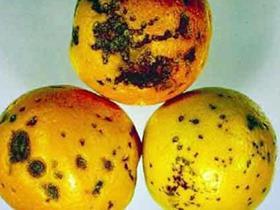
South African citrus growers are set to benefit from the expertise of their Australian counterparts in their fight against the citrus black spot (CBS).
Peak industry body, Citrus Australia, plans to send a team of technical staff to the African nation over the coming months, in an attempt to stem the growth of the fungal disease and reopen the European market to South African exports.
Citrus Australia’s market development manager, Andrew Harty, said the Australian industry had kept a watchful eye on the spread of the disease since the middle of last year, when South African marketers were placed on high alert by European authorities. South African traders were warned that an import ban would be imposed if EU inspectors detected more than five cases of citrus black spot on their fruit over the 2014 season.
A CBS committee, headed up by the South Africa Citrus Growers Association, chose to suspend all citrus exports to the EU last month as a precaution. However, Harty said a number of the country’s major exporters had already looked to redirect volumes away from the EU at the time the self-imposed ban was implemented, causing widespread ramifications for fellow Southern Hemisphere suppliers.
“A lot of South African exporters took the low risk option and put their fruit into China and South East Asia from the outset of the season,” Harty told Asiafruit. “It created a sensitive dynamic, and over a three or four week period later into the Australian season there were some tough trading conditions.”
Harty said the Australian industry would offer a wide range or research and technical resources to South Africa in their bid for re-entry into the EU. He added that there was little justification for banning South African exports, as it had been scientifically proven that fruit is not a pathway for the transmission of the black spot disease.
Challenging season
Leading Australian packer-exporter, Mildura Fruit Company (MFC), has welcomed the push to aid the South African industry and relieve some pressure on the Chinese market, where it has steadily increased its direct shipments since 2011.
Along with added volumes from South Africa in the People’ Republic and a number of South East Asian markets this year, MFC’s general manager Perry Hill said the Australia industry also had to cope with unforseen overhang from the US season.
“US navels were expected to be out of the market by mid-June but this was not the case,” Hill said. “The extra fruit caused slow movement of stock in a number of Asian markets. Also, the increased volumes from Australia at high price levels in a well-supplied market slowed movement and put pressure on prices. Although export prices and demand for Australian navels remained high throughout much of the season,this did not translate into strong demand in China’s main fruit marketsandimporters struggled to make the profits of past seasons.”
Positive signs ahead
Harty believes the outlook is more positive for Australian exporters in Asia next season, regardless of whether the EU reopens its doors to the South African industry. Russia’s recent ban on European and North American fresh produce imports should present a significant opportunity for South Africa there, while North America is also looming as a potential release valve.
“While the EU is clamping down on things like black spot, the US is going the other way and allowing more fruit in,” Harty said. “This is a positive for both South Africa and own industry, as Australian exports have traditionally been focused on the US’ West Coast, whereas now there are greater opportunities to ship fruit across the whole country.”



